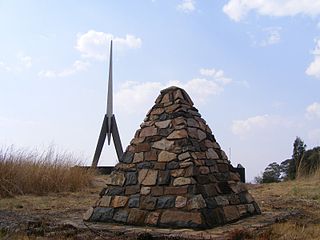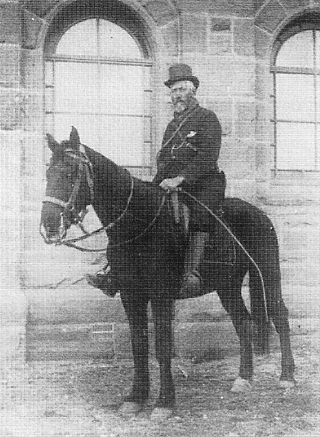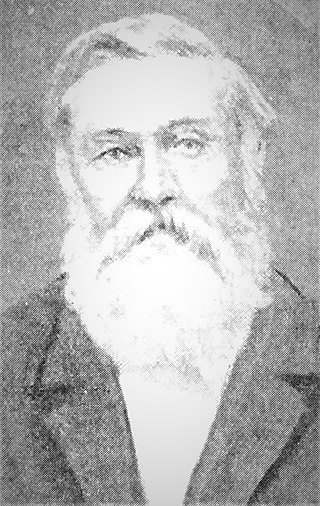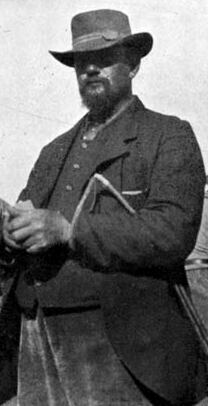
The siege of Ladysmith was a protracted engagement in the Second Boer War, taking place between 2 November 1899 and 28 February 1900 at Ladysmith, Natal.

Belfast is a small town in Mpumalanga Province, South Africa. It is situated in the eMakhazeni Local Municipality in the Nkangala District Municipality.
The following lists events that happened during 1900 in South Africa.

The Battle of Modder River was an engagement in the Boer War, fought at Modder River, on 28 November 1899. A British column under Lord Methuen, that was attempting to relieve the besieged town of Kimberley, forced Boers under General Piet Cronjé to retreat to Magersfontein, but suffered heavy casualties altogether.

The SecondBattle of Colenso, also known as the Battle of Colenso, was the third and final battle fought during the Black Week of the Second Boer War. It was fought between British and Boer forces from the independent South African Republic and Orange Free State in and around Colenso, Natal, South Africa on 15 December 1899.

The Battle of Paardeberg or Perdeberg was a major battle during the Second Anglo-Boer War. It was fought near Paardeberg Drift on the banks of the Modder River in the Orange Free State near Kimberley.

The Battle of Magersfontein was fought on 11 December 1899, at Magersfontein, near Kimberley, South Africa, on the borders of the Cape Colony and the independent republic of the Orange Free State. British forces under Lieutenant General Lord Methuen were advancing north along the railway line from the Cape to relieve the siege of Kimberley, but their path was blocked at Magersfontein by a Boer force that was entrenched in the surrounding hills. The British had already fought a series of battles with the Boers, most recently at Modder River, where the advance was temporarily halted.

The 155 mm CreusotLong Tom was a French siege gun manufactured by Schneider et Cie in Le Creusot, France and used by the Boers in the Second Boer War as field guns.

The Battle of Vaal Krantz was the third failed attempt by General Redvers Buller's British army to fight its way past Louis Botha's army of Boer irregulars and lift the Siege of Ladysmith. The battle occurred during the Second Boer War.

Christoffel Cornelis Froneman, commonly known as Stoffel Froneman, was veldkornet, general and Vice-Commander-in-Chief of the Orange Free State Boer forces during the Anglo-Boer War of 1899-1902.

The South Australian Mounted Rifles (SAMR) was a mounted infantry unit of the Colony of South Australia that served in the Second Boer War. The first contingent of South Australian Mounted Rifles was raised in 1899, followed by a second contingent in 1900.

Jan Hendrik Olivier was a Boer general during the Second Boer War who was notable for being the main Boer commander at the Battle of Stormberg.

Marthinus Prinsloo was an Orange Free State Boer farmer, politician and general in the Second Boer War (1899-1902). He was born of Nicolaas Frans Prinsloo and Isabella Johanna Petronella Rautenbach in the district of Graaff-Reinet, South Africa who migrated to the Orange Free State where they lived in Bloemfontein, Waterval and Bethlehem. Marthinus Prinsloo was the eldest brother of Orange Free State assistant chief commander Antonie Michael Prinsloo.

Pieter Daniël de Wet was a Boer general in the Anglo-Boer War (1899–1902) and a younger brother of Boer general and politician Christiaan de Wet. Piet de Wet participated in the Battle of Poplar Grove, the Battle of Sanna's Post for the waterworks there, and defeated the 13th Battalion Imperial Yeomanry at Lindley. In July 1900, he surrendered to the British at Kroonstad, Orange Free State. He became a prominent member of the National Scouts helping the British in the last years of the Boer War.

Christiaan Botha was a younger brother of Louis Botha (1862–1919) and Philip Botha (1851-1901), but an older brother of Theunis Jacobus Botha (1867-1930), and likewise a Boer general in the Second Boer War (1899–1902) who then both fought the British to the end.

Sarel François Oosthuizen, 22 March 1862 – 14 August 1900) was a Boer War general. In 1920 he was posthumously awarded the Dekoratie Voor Trouwe Dienst, Anglo-Boeroorlog, 1899-1902.

Joachim Christoffel Fourie was an Anglo-Boer War Combat General and Assistant Commander-in-Chief for the South African Republic. He should not be confused with his colleagues, the Second Boer War generals Christiaan Ernst Fourie (1858-1943) and Petrus "Piet" Johannes Fourie (1842-1916), and his son and namesake Joachim Christoffel Fourie (1877-1958), military commander of the Carolina Commando in the South West Africa campaign (1914-1915) in the First World War.

Sarel Petrus du Toit was a Second Boer War Boer general for the South African Republic. In 1896 he was elected representative to the Eerste Volksraad in Pretoria for the district of Wolmaransstad.

Daniel Jacobus Elardus Erasmus was a Boer general during the Anglo Boer War (1899–1902).
Ferdinandus Jacobus Potgieter was a Boer general in the Second Boer War (1899–1902).



























